Marrakech, a mesmerizing city located at the foothills of the Atlas Mountains, is a vibrant tapestry of sights, sounds, and scents. With its bustling souks, magnificent palaces, and serene gardens, it’s no wonder that it stands as one of Morocco’s most visited destinations.
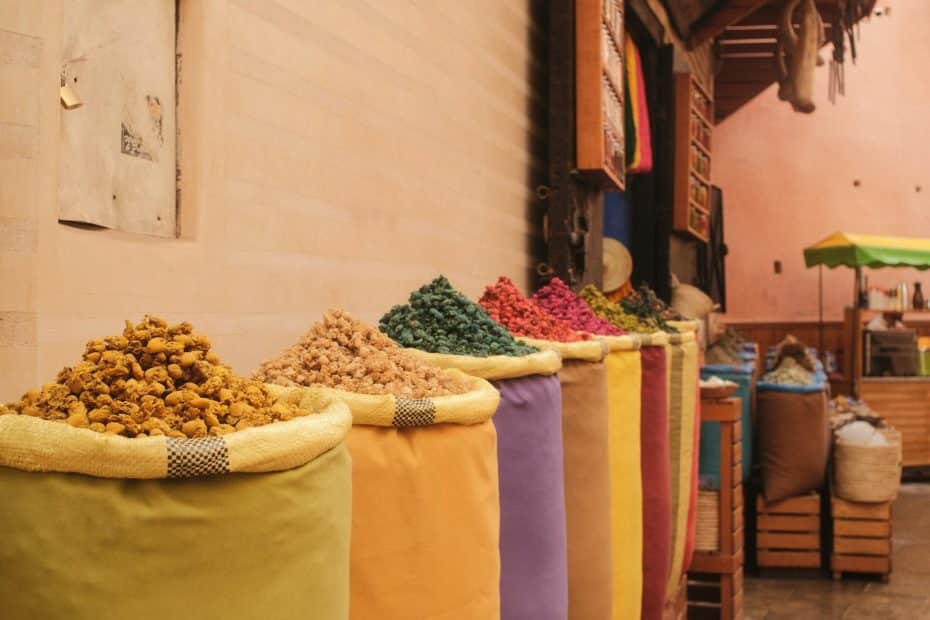
Whether wandering through its ancient Medina or soaking up the lively atmosphere of Jemaa el-Fnaa, Marrakech promises an unforgettable journey filled with cultural and historical richness.
Morocco Earthquake
In light of the earthquake on 8 September 2023, Marrakech has demonstrated incredible resilience and strength as the city recovers. Although some attractions may be temporarily unavailable or have altered schedules, many must-see sites remain accessible.
As Marrakech rebuilds, your support as a traveler is invaluable. By visiting the city during this time, you contribute to its economy and aid in recovery efforts. You can leave a positive impact by engaging with local businesses and purchasing products made by regional artisans.
For those seeking volunteer opportunities or additional ways to assist, numerous organizations and community groups are welcoming aid in recovery projects.
Top Things to See & Do in Marrakech
In this guide, we’ve compiled an essential list of the top 21 must-see attractions that should be on every traveler’s itinerary when visiting this captivating city.
1. Jemaa el-Fnaa
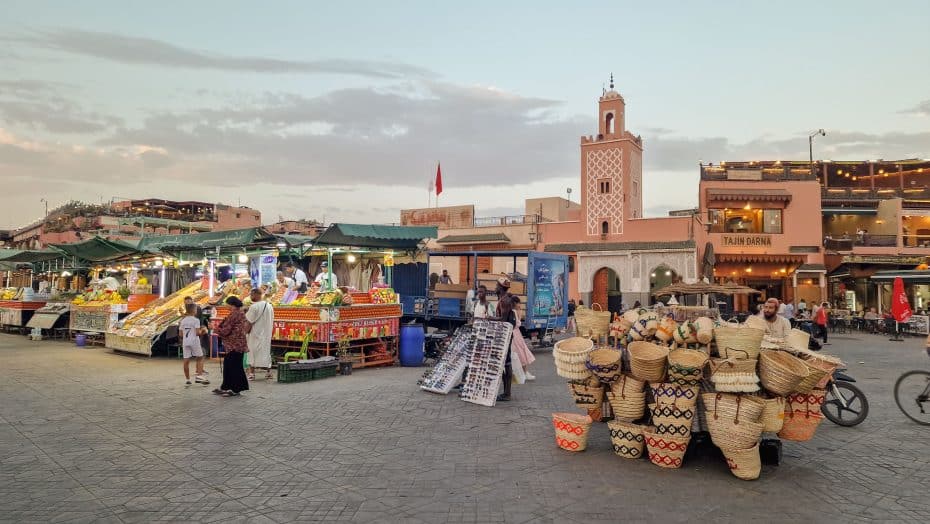
Jemaa el-Fnaa is the city’s bustling main square. It is located in the Medina Quarter and has been the heart of the city since its establishment in the 11th century. This open-air space is famous for its vibrant and chaotic atmosphere, filled with street performers, snake charmers, and hawkers selling everything from fresh orange juice to traditional Moroccan sweets. The square comes alive in the evening as food stalls set up, offering local delicacies like harira soup and grilled meats.
Historically, Jemaa el-Fnaa served as a site for public executions and a trading area where merchants would come to sell their goods. Its significance led UNESCO to declare it a Masterpiece of Oral and Intangible Heritage of Humanity. Numerous cafes and terrace restaurants border the square and provide panoramic views, making it an excellent spot for people-watching. Nearby attractions include the souks, where you can haggle for spices, leather goods, and traditional crafts. Despite its modern popularity, the square retains its historical character and remains a central gathering place.
2. Koutoubia Mosque
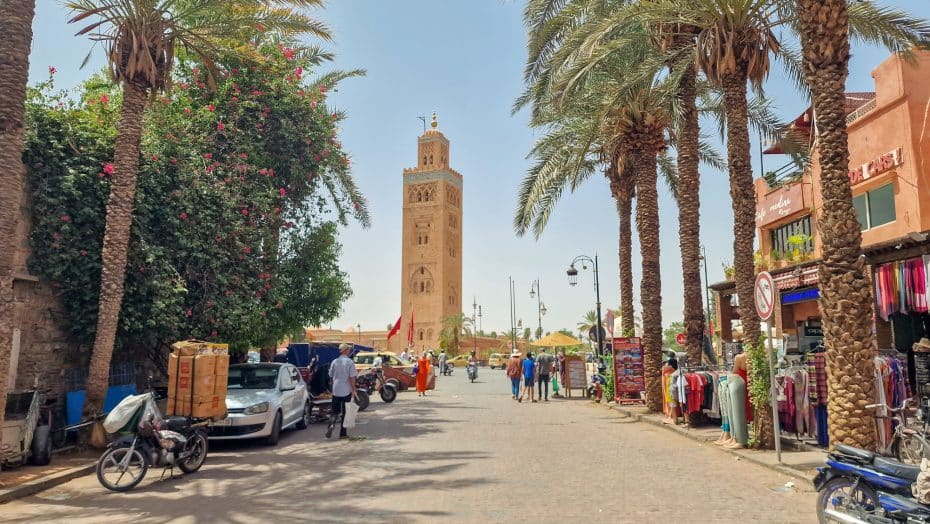
Koutoubia Mosque, built in the 12th century, is an iconic landmark in Marrakech. Situated near the Djemaa el-Fna square, its towering minaret reaches 77 meters (250 ft) high, making it visible from various points in the city.
Almohad Caliph Yaqub al-Mansur commissioned the mosque, which showcases classic Almohad architecture with red sandstone walls and horseshoe arches reminiscent of that of Al-Andalus. The Koutoubia’s name translates to “Mosque of the Booksellers,” a nod to the bustling book market that once flourished nearby.
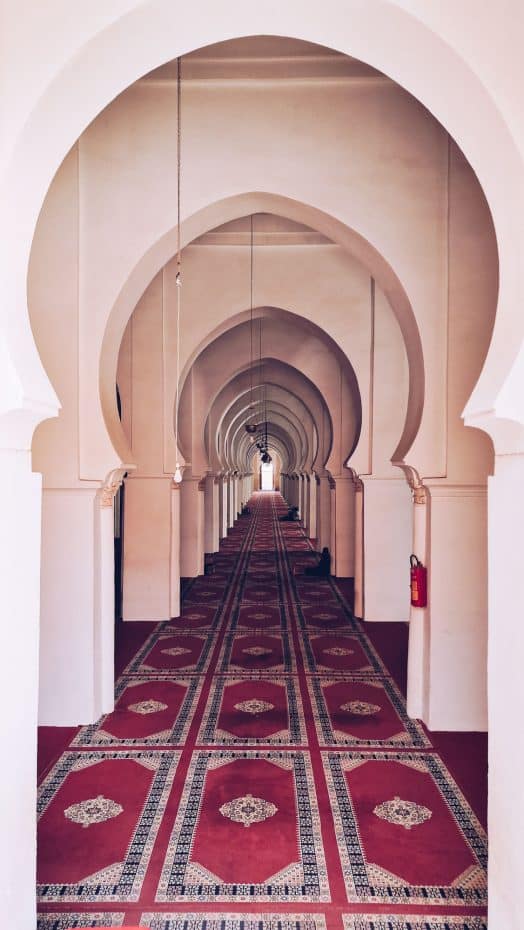
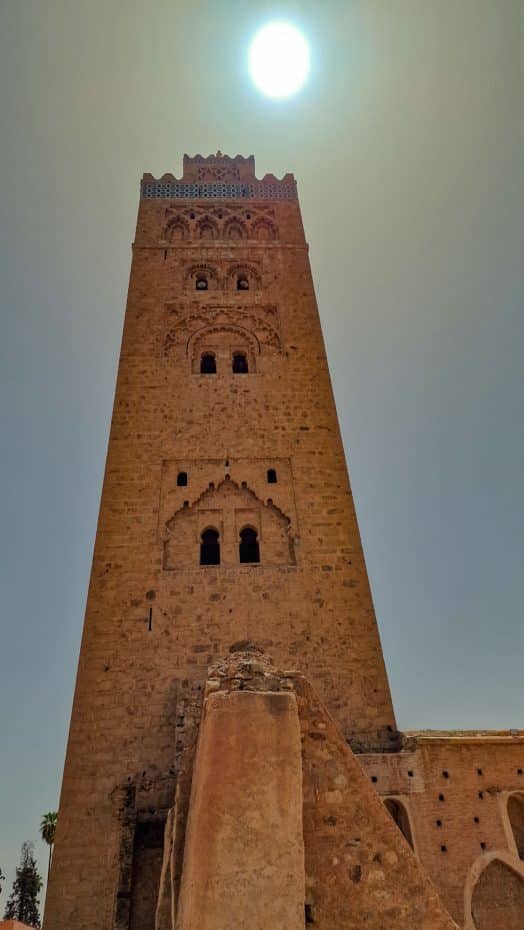
Though non-Muslims are not allowed inside, the surrounding gardens provide a peaceful place for contemplation.
3. Bahia Palace
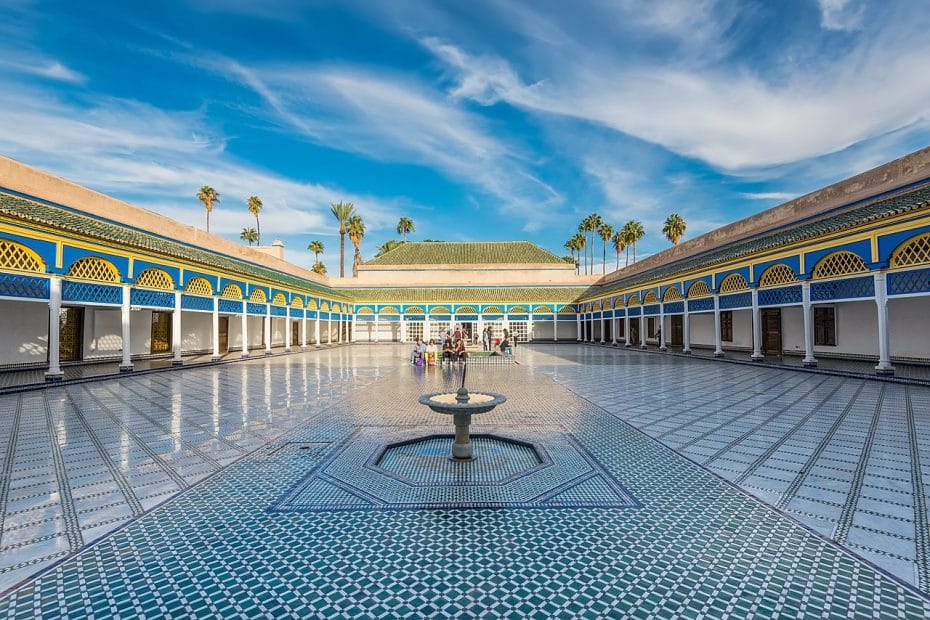
Bahia Palace, constructed in the late 19th century, is a testament to Moroccan craftsmanship and architectural ingenuity. Located off Rue Riad Zitoun el Jedid in Marrakech, the palace was commissioned by Si Moussa, a former slave who rose to become the sultan’s grand vizier.
Spread over eight hectares, it captures the essence of Islamic and Moroccan styles with its intricate marble floors, zellige tiles, and intricately carved cedar wood ceilings.
When visiting Bahia Palace, don’t miss the Grand Courtyard. Its stunning marble floor contrasts with the colorful mosaics that tell stories of an age gone by. Another point of interest is the Petit Riad, which features a serene garden filled with fragrant orange trees and fountains. The palace does not follow a regular architectural pattern; it grew organically as new wings were added over time, making it a fascinating maze of rooms and corridors.
You can book tickets to visit the Bahia Palace here.
4. Majorelle Garden & Yves Saint Laurent Museum
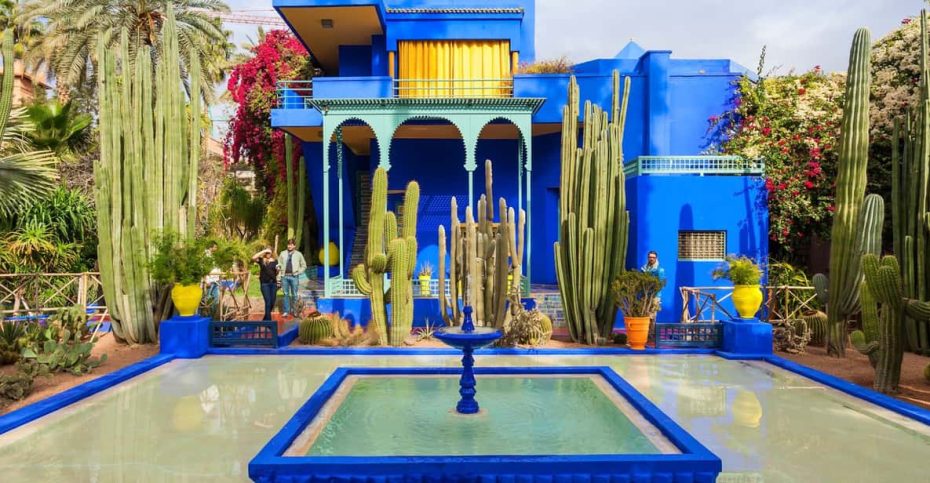
Majorelle Garden, located in the bustling Gueliz district of Marrakech, is an oasis of calm amidst the city’s chaos. Initially designed by the French painter Jacques Majorelle in the 1920s and 1930s, the garden was later restored by fashion icon Yves Saint Laurent and his partner Pierre Bergé. The garden spans nearly two and a half acres and is dotted with foreign plants, fountains, and vibrant cobalt-blue buildings. This vivid blue shade became known as “Majorelle Blue” and has become synonymous with the garden. Visitors can find the garden on Rue Yves Saint Laurent. The entrance fee for the garden alone is around 70 MAD (approximately $7 USD).
Adjacent to the Majorelle Garden is the Yves Saint Laurent Museum, which opened its doors in October 2017. This museum pays homage to Saint Laurent’s life and career, featuring a permanent exhibition space displaying several hundred garments, including many of his iconic designs such as the Mondrian dress and Le Smoking suit. It offers deeper insight into how Marrakech inspired his work, contributed to his rich legacy, and highlights his same-sex relationship with Pierre Bergé. The garden and museum entry costs about 100 MAD (around $10 USD). The best time to visit is early morning or late afternoon to avoid large crowds and enjoy a more contemplative experience.
5. Saadian Tombs
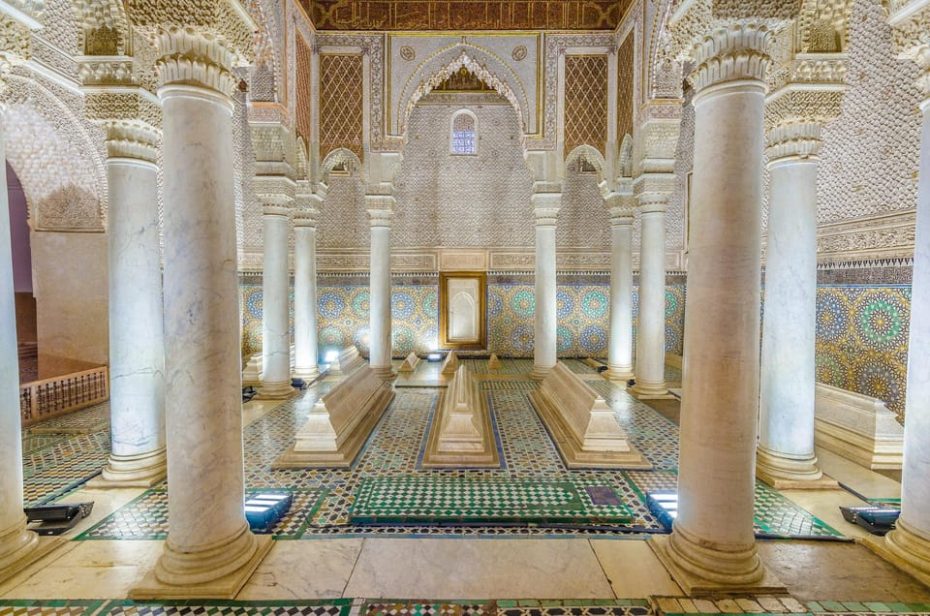
The Saadian Tombs, located near the Kasbah Mosque in Marrakech, are a remarkable testament to the grandeur of the Saadian dynasty. Dating back to the era of Sultan Ahmed al-Mansur in the late 16th century, the tombs were found in 1917 after being sealed off for centuries. The complex houses around 60 members of the Saadian dynasty, including al-Mansur himself. Visitors entering through the narrow passageways will find themselves among intricately decorated mausoleums adorned with colorful tiles and Arabic calligraphy.
While exploring the site, visit the Chamber of the Twelve Columns, home to Sultan al-Mansur’s burial place. The chamber features an impressive dome supported by twelve marble columns, underlining the luxury of Saadian architecture. Entrance fees are modest, usually around 70 MAD (Moroccan Dirhams), and it’s best to visit early in the morning or late in the afternoon to avoid crowds. Equipped with insightful historical details, this site offers a palpable sense of connection with Morocco’s imperial past.
6. El Badi Palace
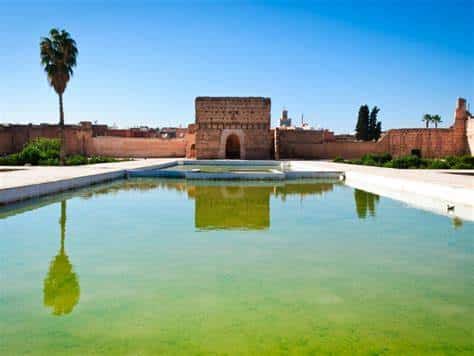
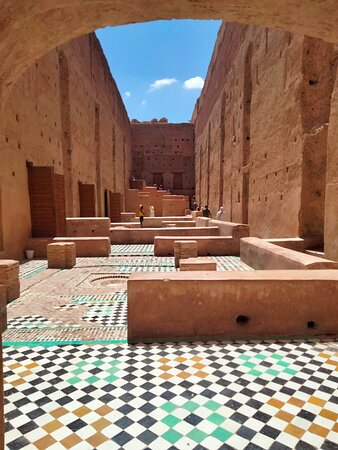
El Badi Palace is an awe-inspiring ruin that once served as a grand royal residence. Commissioned by Sultan Ahmed al-Mansur following his victory over the Portuguese army at the Battle of the Three Kings in 1578, this palace took about 25 years to complete. Originally intended as a symbol of triumph and wealth, it featured more than 350 rooms adorned with gold, marble, and precious stones sourced from across Europe and Africa.
Today, El Badi Palace is mostly a skeletal remnant of its former glory; however, it still holds immense fascination for history buffs. Within its massive walls lies a large central pool flanked by four sunken gardens. Visitors are encouraged to explore at their own pace; key highlights include the Minbar of Koutoubia Mosque and seasonal exhibitions hosted within its walls. General admission costs approximately 70 MAD, making it an accessible stop on any Marrakech itinerary. Visiting during spring offers pleasant weather to appreciate this historical site comfortably.
7. Medina of Marrakech – A Place to Get Lost
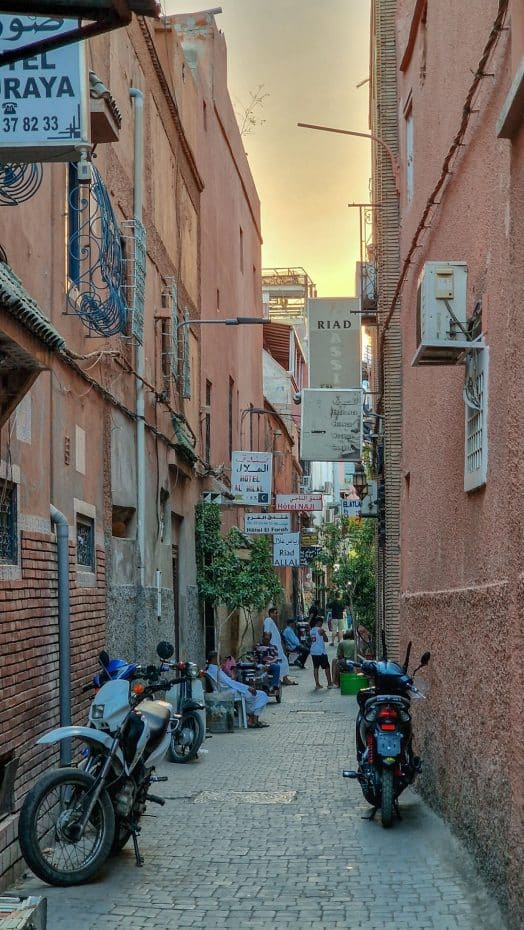
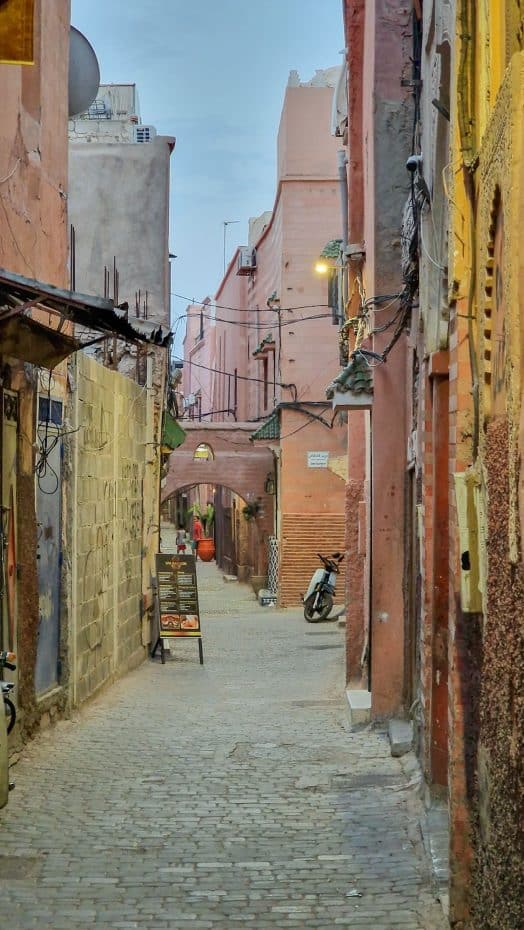
The Medina of Marrakech, a UNESCO World Heritage site since 1985, is an ancient walled city filled with history and culture. It dates back to 1070 and the Almoravids, a Berber dynasty that ruled North Africa and parts of Spain. This historic district in Marrakech contains palaces, mosques, and traditional Moroccan homes known as riads. Remarkable architectural landmarks include the Koutoubia Mosque, completed in 1158 by the Almohad Caliphate, and Palais de la Bahia, built in the late 19th century by Grand Vizier Si Moussa. That said, part of Medina’s charm lies in its many narrow alleyways an winding streets leading to vibrant souks (markets) offering food, handicrafts, textiles, and traditional Moroccan goods at various price points.
8. Menara Gardens
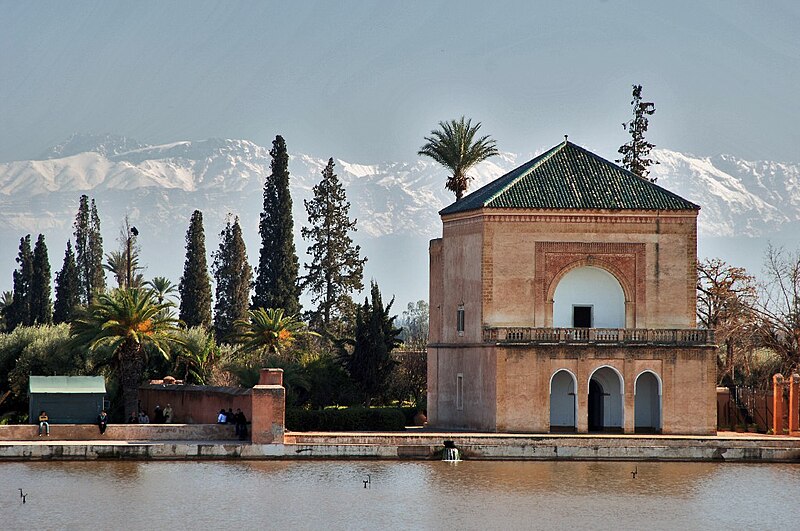
Menara Gardens is an expansive green oasis on the western edge of Marrakech near the Atlas Mountains. It was established in the 12th century by the Almohad sultan Abd al-Mu’min as a symbol of peace and tranquility amidst the bustling city. The gardens encompass approximately 100 acres (405 hectares) and consist primarily of olive groves surrounding a sizable human-made lake. The lake’s central feature is a pavilion with a pyramid-shaped green roof known as the Saadian Pavilion, which serves as a remarkable background for photography. Menara Gardens is open daily and offers free admission. The ideal time to visit is during spring when olive trees are in bloom or early morning and late afternoon for a milder temperature and less crowding.
9. Marrakech Museum
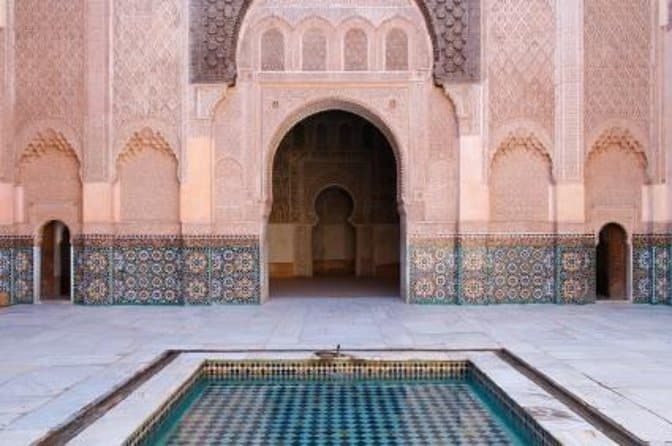
The Marrakech Museum, housed in the opulent Dar Menebhi Palace, provides an intricate look into Morocco’s cultural and historical past. Constructed at the end of the 19th century by Mehdi Menebhi, a former defense minister, the palace showcases classic Andalusian architecture with its intricate tile work and grand courtyards. Visitors can explore a collection that includes traditional Moroccan art, contemporary art pieces, and historical artifacts such as pottery, jewelry, and textiles. The central courtyard, with its imposing chandelier and tranquil fountains, is particularly noteworthy.
Located in the heart of the old city (Medina), near the Ben Youssef Madrasa, the museum is easily accessible on foot for those exploring this historic neighborhood. Admission to the Marrakech Museum costs around 50 Dirhams (approximately $5 USD). It’s open from 9 AM to 6:30 PM daily. To avoid large crowds, visiting during weekdays or early mornings is advisable.
10. Palmeraie (Palm Grove)
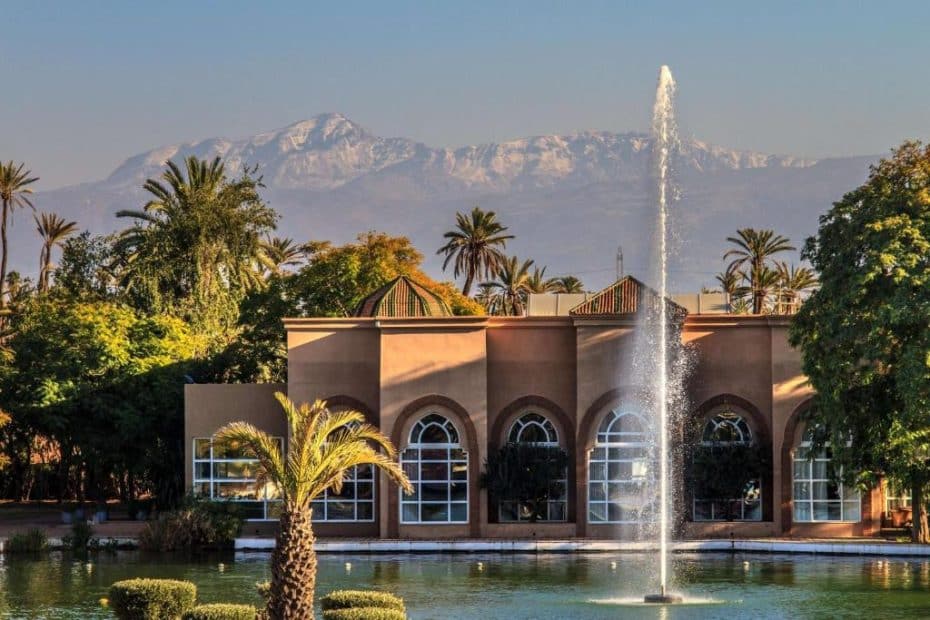
The Palmeraie is one of Marrakech’s most famous natural sites, stretching over 54 square miles with more than 100,000 palm trees. Located about 10 kilometers north of central Marrakech, it’s a desert oasis providing a lush retreat for centuries. Historically used as farmland due to its favorable irrigation conditions introduced during the Almoravid dynasty in the 11th century, today it serves more recreational purposes.
Accessing the Palmeraie is straightforward – taxis are plentiful from downtown Marrakech and typically charge around 100-150 Dirhams ($10-15). For those interested in activities like camel riding or quad biking through this expansive grove, it’s best to visit in the late afternoon or early evening when temperatures are cooler. Prices for activities vary but generally hover around 300-400 Dirhams ($30-40) for an hour’s adventure. While there isn’t a set entry fee to visit the Palmeraie, costs depend on the particular services you engage with.
11. Dar Si Said Museum
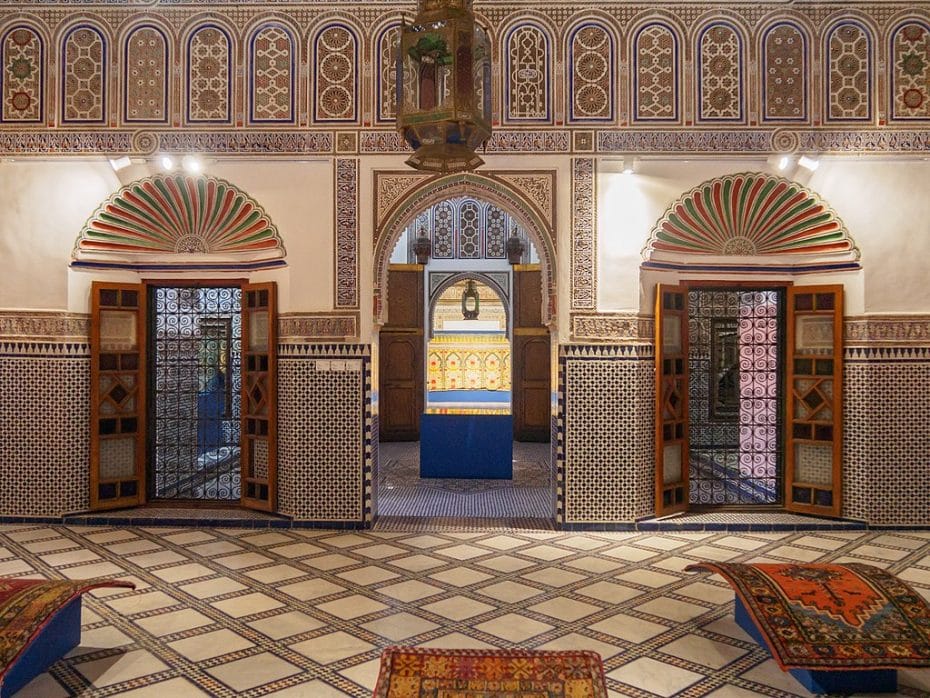
Located in the southern part of the Medina, the Dar Si Said Museum is a captivating repository of Moroccan art and culture. This museum is housed in an opulent 19th-century palace originally constructed by Si Said, who served as the Minister of War under Sultan Moulay Hassan I. The structure itself is a masterpiece of traditional Moroccan architecture, featuring intricately carved wooden ceilings, vibrant zellige mosaics, and exquisite stucco decorations.
Inside, visitors can explore an extensive collection of artifacts that span several centuries. The exhibits include ancient Berber jewelry, beautifully crafted textiles, traditional pottery, and antique carpets from various regions of Morocco.
12. Agdal Gardens
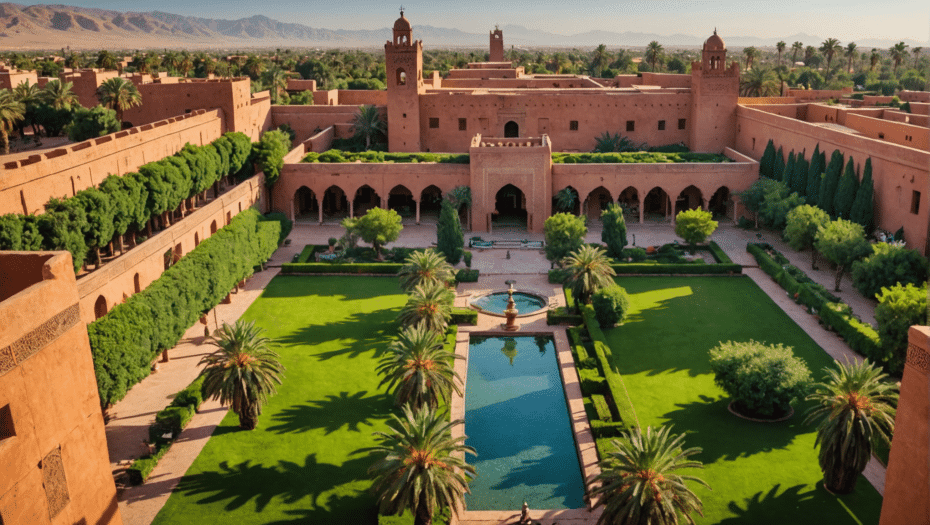
The Agdal Gardens are another must-see attraction in Marrakech. Dating back to the Almohad dynasty under Caliph Abd al-Mu’min in the 12th century, they cover about 400 hectares and are situated south of the Royal Palace. Designed as a respite for royalty, they consist of vast olive groves interspersed with fruit trees such as orange, pomegranate, and apricot.
13. Tanneries District
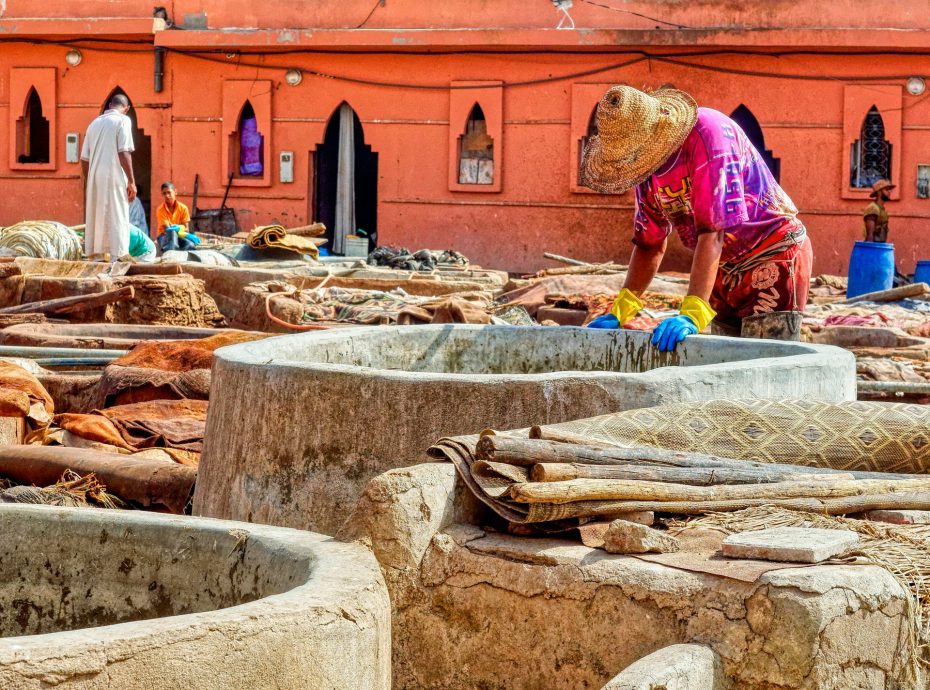
Located in the northeastern part of the Medina, the Tanneries District offers a fascinating insight into an age-old craft.
This district has specialized in leatherwork for over a thousand years, preserving its unique techniques through generations. A visit here brings you face-to-face with craftsmen overseeing large stone vats where hides are treated and dyed. The traditional process uses natural ingredients such as pigeon droppings and vegetable dyes, resulting in a vibrant palette of colors. While exploring, expect strong smells; it’s advisable to bring a sprig of mint, often offered by locals to mask the odor. The best time to visit is mid-morning when workers are most active.
14. Museum of African Contemporary Art Al Maaden (MACAAL)
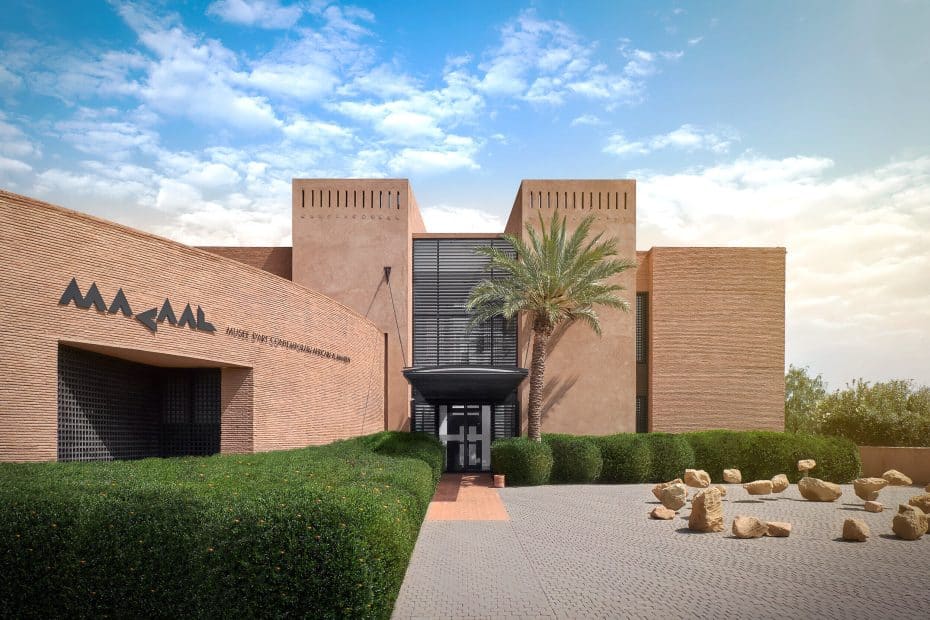
MACAAL is located in the Al Maaden complex, just a short drive from Marrakech’s city center. Opened in 2016, this museum boasts an impressive collection of contemporary African art, showcasing works by emerging and established artists from across the continent. The museum’s space itself is designed to be as captivating as its exhibits, featuring minimalist architecture that complements the artworks. Notable exhibitions have included pieces by artists like Soly Cissé and Abdoulaye Konaté. Admission prices are reasonable, typically around 70 Moroccan dirhams per person. MACAAL is open from Wednesday to Sunday, with morning or late afternoon visits recommended to avoid crowds and make the most of your experience.
15. Museum of Photography Marrakech

Located in the medina within a traditional riad, the Museum of Photography Marrakech is a treasure trove for photography enthusiasts and history buffs. It showcases thousands of photographs from the 1870s to the 1950s, offering an evocative glimpse into Morocco’s daily lives and landscapes from over a century ago. Don’t miss their stunning rooftop terrace for an excellent city view, where you can relax with a cup of mint tea. Admission costs around 50 Moroccan dirhams and is open daily from 9:30 AM to 7:00 PM. The easiest way to reach the museum is by walking through the medina’s labyrinthine streets or hiring a local guide who can lead you straight to its doors.
16. The Mellah (Jewish Quarter)
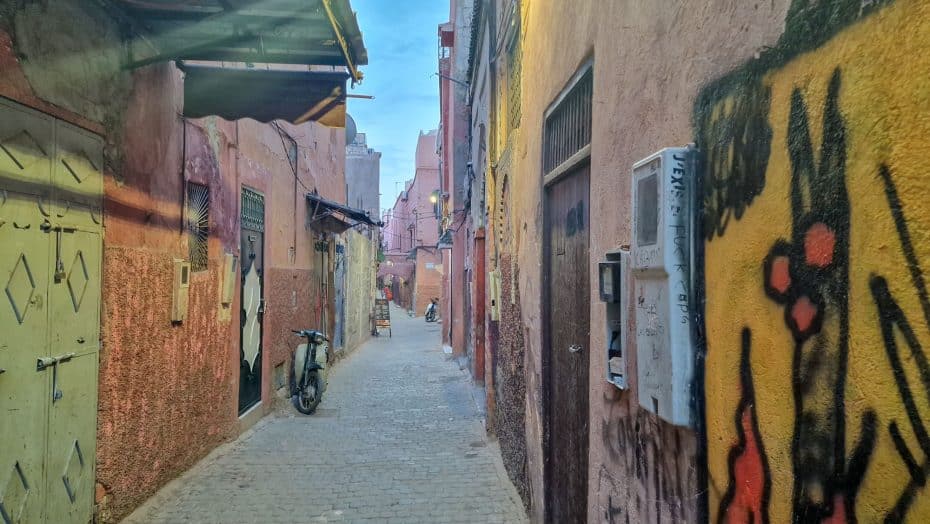
The Mellah, Marrakech’s historic Jewish Quarter, dates back to the 16th century when Sultan Moulay Abdallah established it. Located near the Royal Palace in the southern part of Medina, it once served as home to a large Jewish community. Notable sights include the Lazama Synagogue, one of Morocco’s oldest, and Miara Cemetery, which is still in use today. Visiting is free, though some sites may charge a small entrance fee. It is best to visit during daylight hours when shops and historical sites are open to visitors.
17. Ben Youssef Madrasa
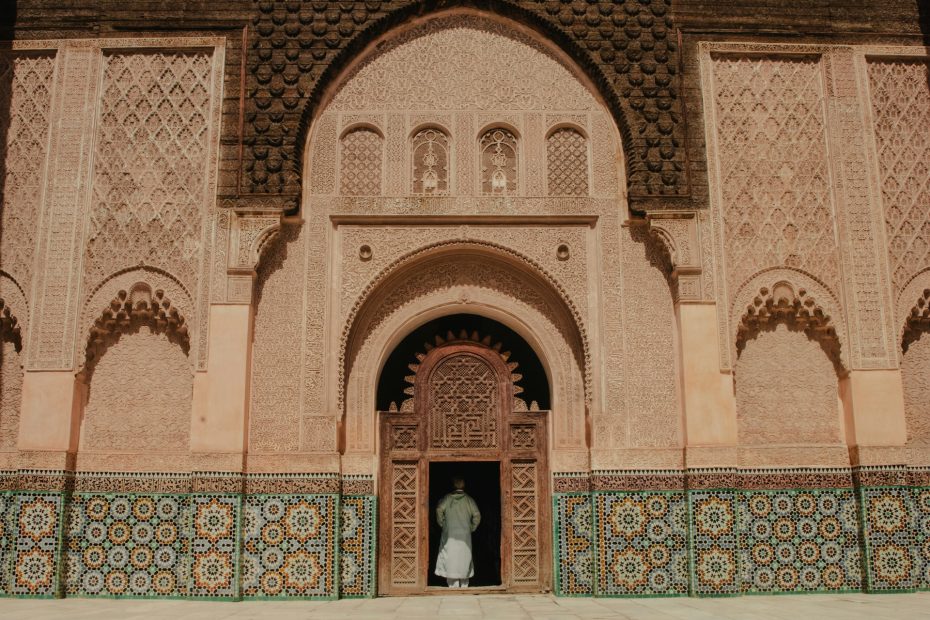
The Ben Youssef Madrasa, founded in the 14th century and rebuilt by the Saadian Sultan Abdallah al-Ghalib in 1565, was an Islamic college for centuries. Located just a stone’s throw north of the bustling Jemaa el-Fnaa square, it’s nestled within the maze-like streets of Marrakech’s Medina. A thing not to miss is the courtyard, adorned with intricate zellij tilework, carved cedarwood, and stucco decorations. The madrasa once housed up to 900 students within its compact dormitory rooms that line the patio. Open to the public from 9 am to 5 pm, entrance costs about 70 MAD. Early mornings are best for avoiding crowds and capturing serene photographs.
18. Souk Semmarine
Marrakech’s Souk Semmarine is far removed from commercialized markets; it’s an authentic labyrinth of trade streets located centrally within Marrakech’s Medina.
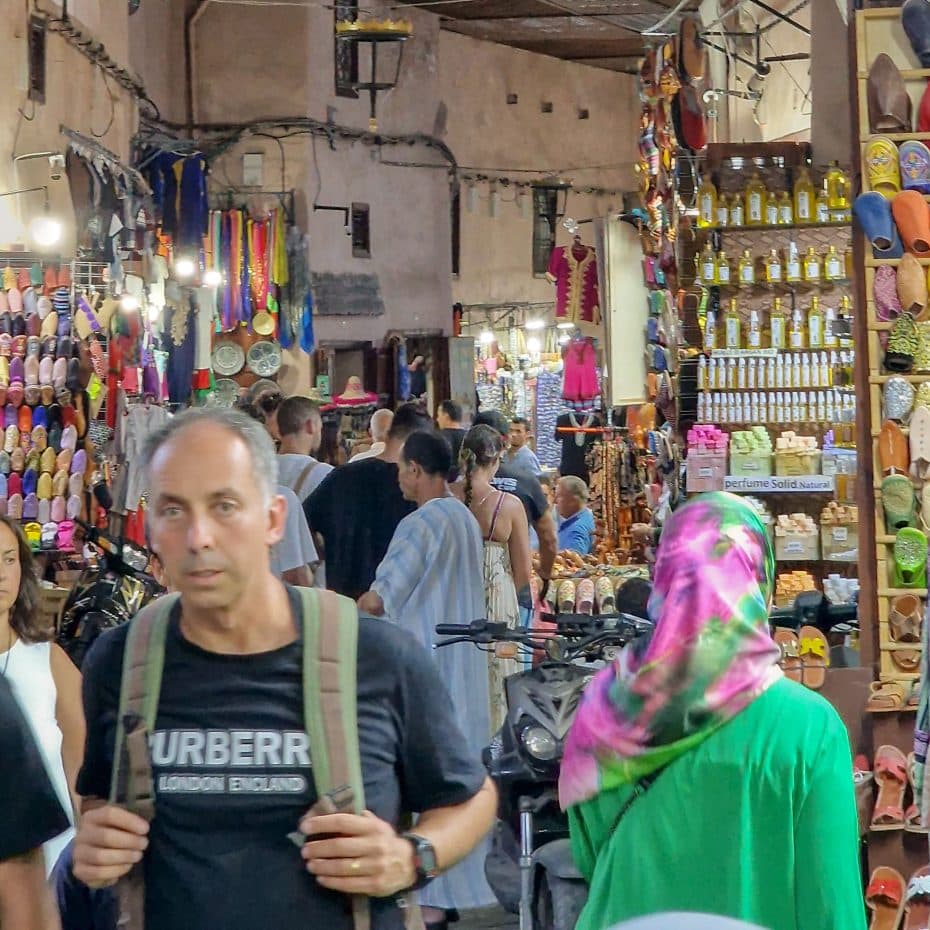
It’s best accessed from Rue Semmarine after entering the Bab Ftouh gate. This partially covered market specializes in traditional Moroccan goods such as spices, textiles, pottery, and leather goods. Be prepared to haggle for a better price on unique souvenirs like handwoven carpets or fragrant spices stacked high in conical displays. The souk bursts into life from mid-morning until late evening, making any time ideal for a visit.
19. Atlas Golf Marrakech
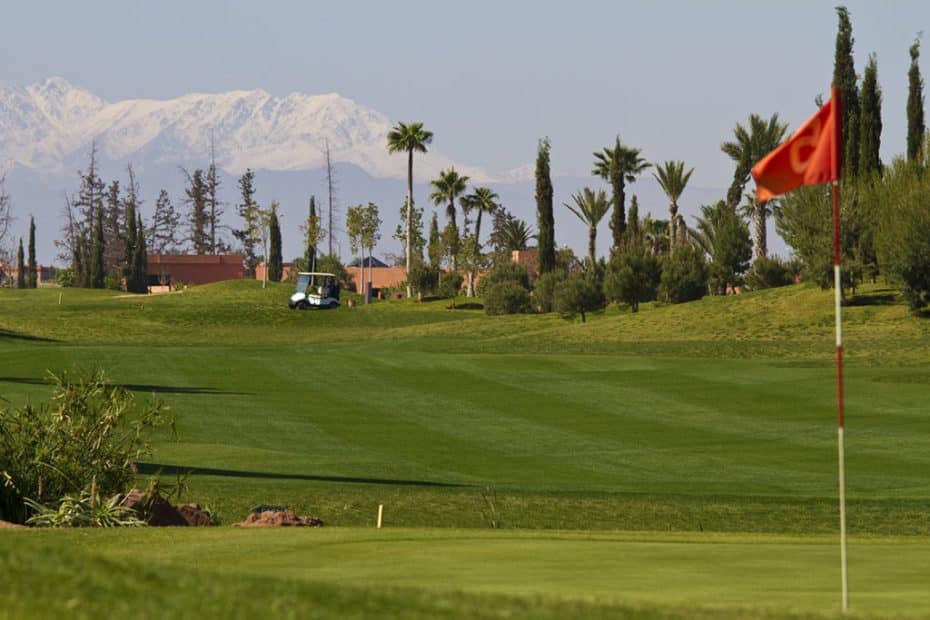
Atlas Golf Marrakech, situated just a few kilometers outside the city center along Route d’Amizmiz, offers an escape from the bustling city streets to embrace leisure under the open sky. This nine-hole golf course is set against the backdrop of the majestic Atlas Mountains and features a practice range, putting greens, and even mini-golf for families. Designed by architect Alain Prat in 1998, it’s both challenging and scenic.
A typical round costs around 250 MAD and booking tee times in advance during peak tourist season (September to April) is advisable. Warm afternoons provide excellent conditions for an enjoyable game of golf.
Book a Private Golf Session + Transfer here
20. Agafay Desert
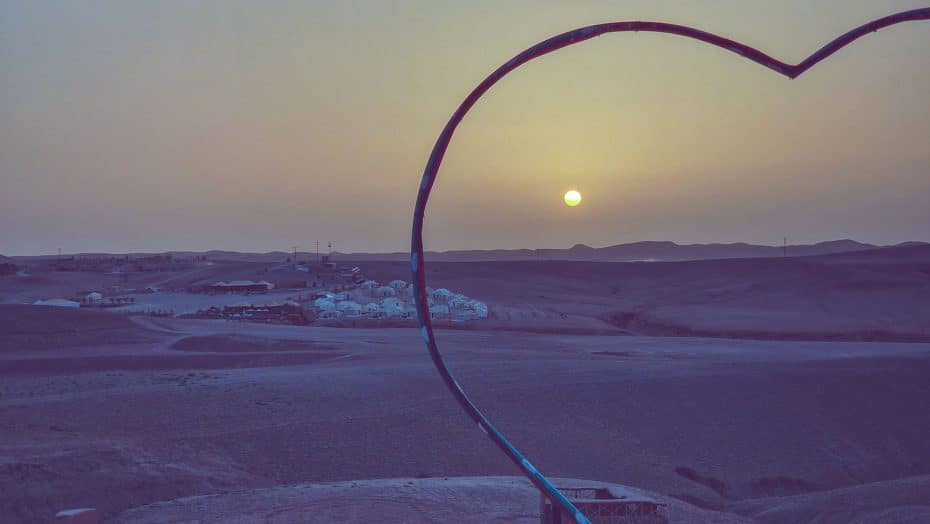
Located just 40 kilometers southwest of Marrakech, the Agafay Desert offers a stark yet stunning contrast to the bustling city. Unlike the Sahara’s famous dunes, Agafay boasts rocky plains and impressive hills. Visit between October and May to avoid the intense summer heat. Adventure seekers can enjoy camel or quad bike rides, while those seeking tranquility might prefer an evening under the stars in one of the desert camps.
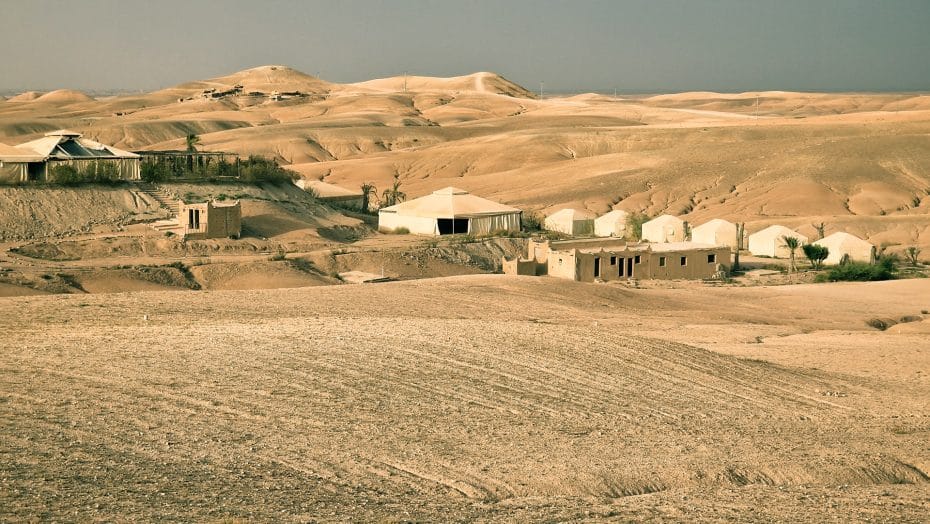
A day trip can cost around 60-100 USD, depending on the activities and level of luxury you choose. You can check prices and services offered here.
21. Ait Benhaddou
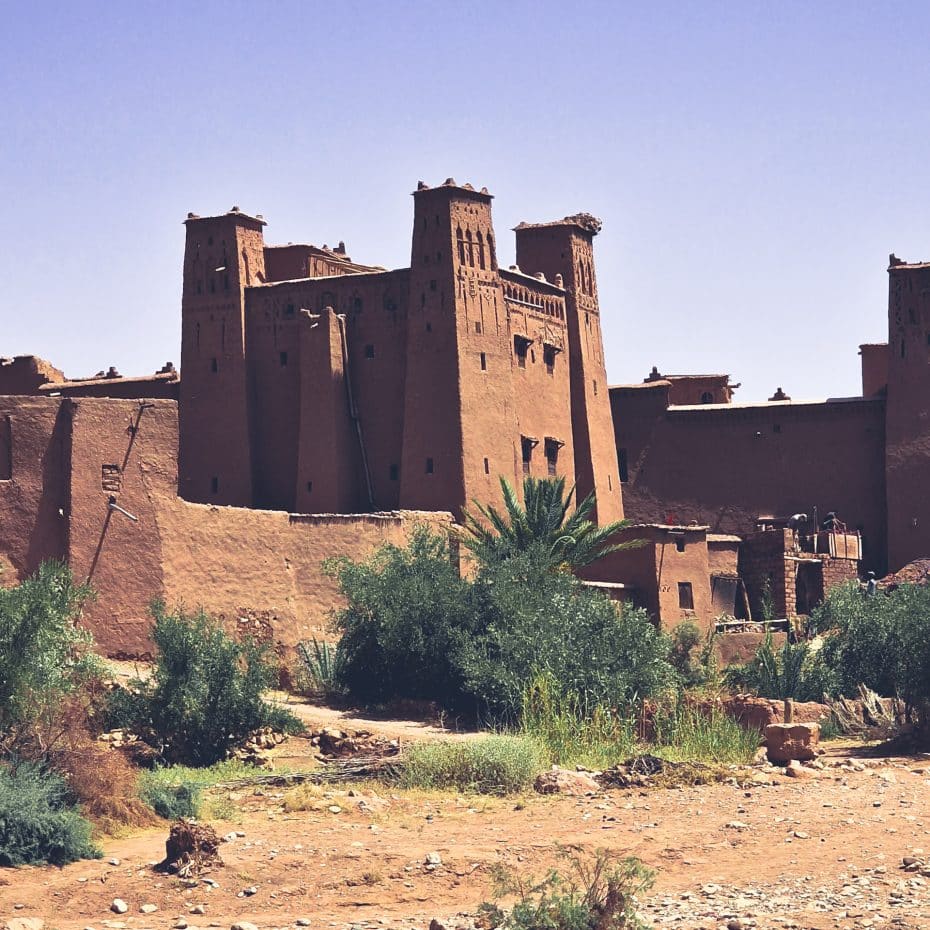
Ait Benhaddou is a fortified village along the former caravan route between the Sahara and Marrakech, approximately 180 kilometers southeast of Marrakech. Known for its well-preserved earthen clay architecture, this UNESCO World Heritage site has been featured in numerous films and TV shows, including “Gladiator” and “Game of Thrones.”
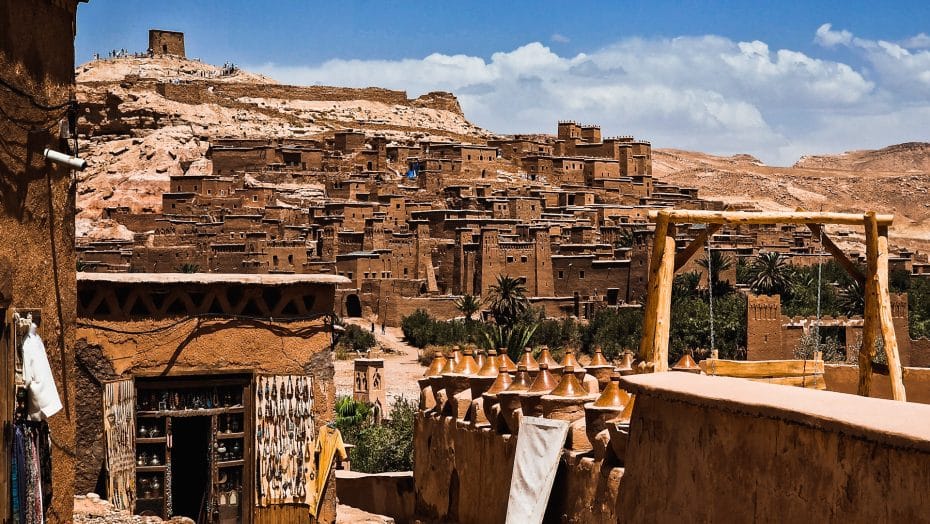
The village dates back to the 17th century, though some parts are older. Entrance fees are around 1-2 USD, and a local guide’s services could add another 10-20 USD. The best time to visit is spring or autumn, when temperatures are milder.



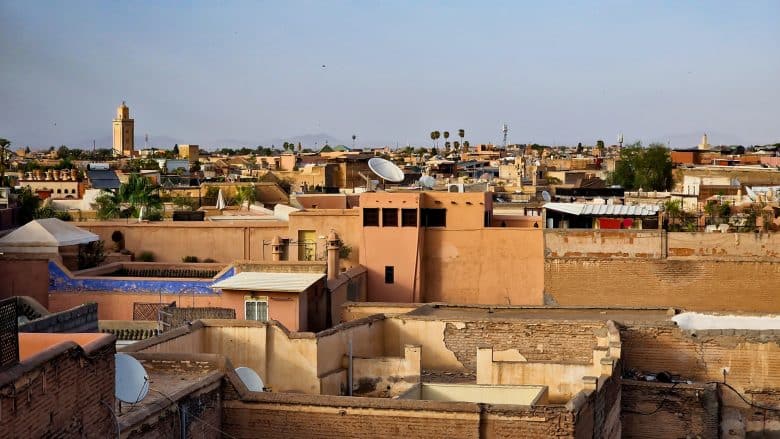
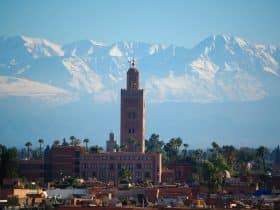
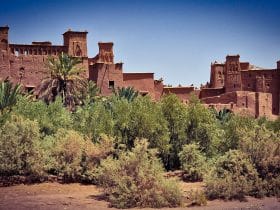



















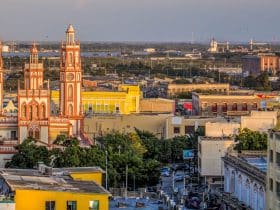
Leave a Reply
View Comments